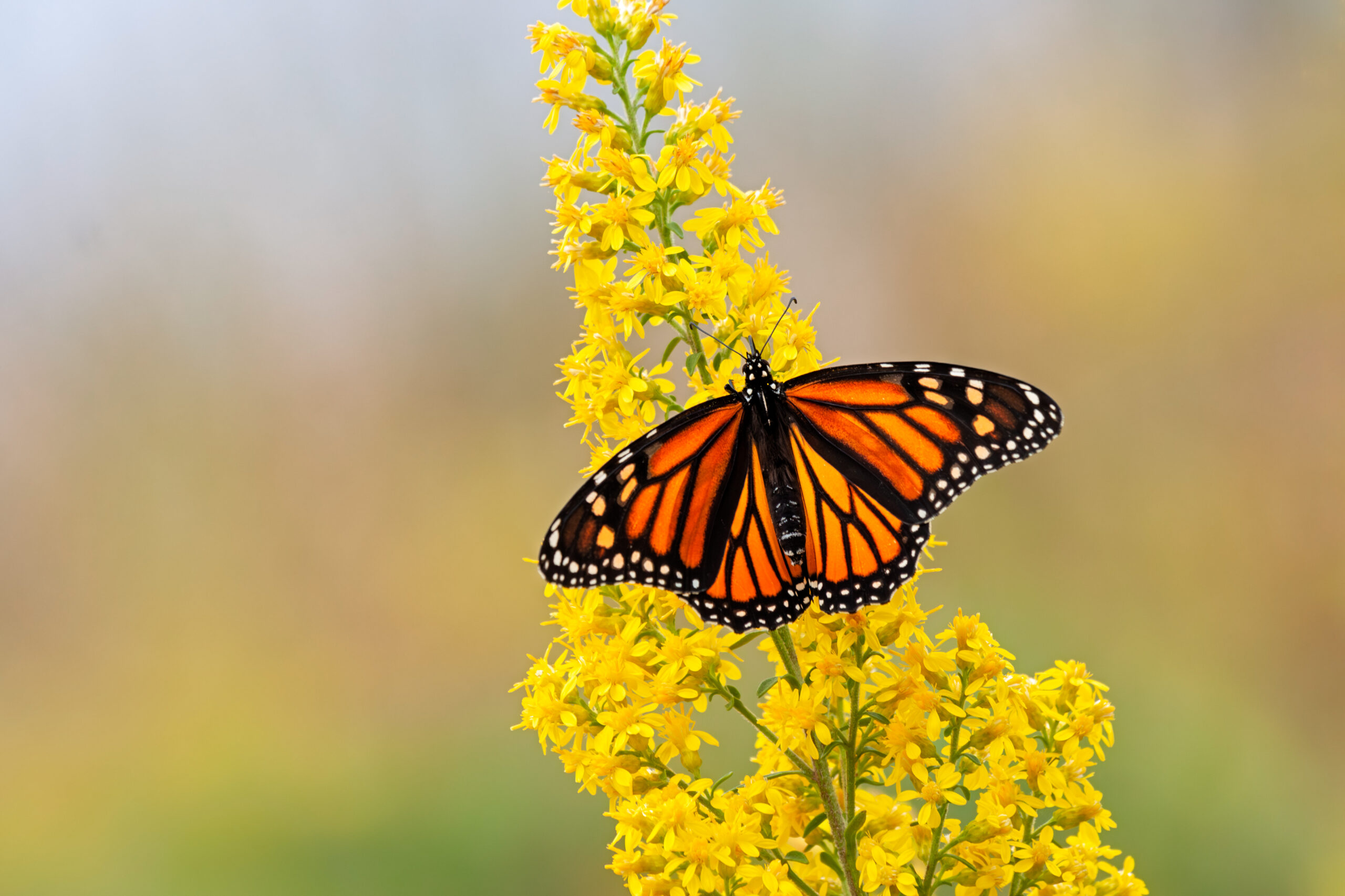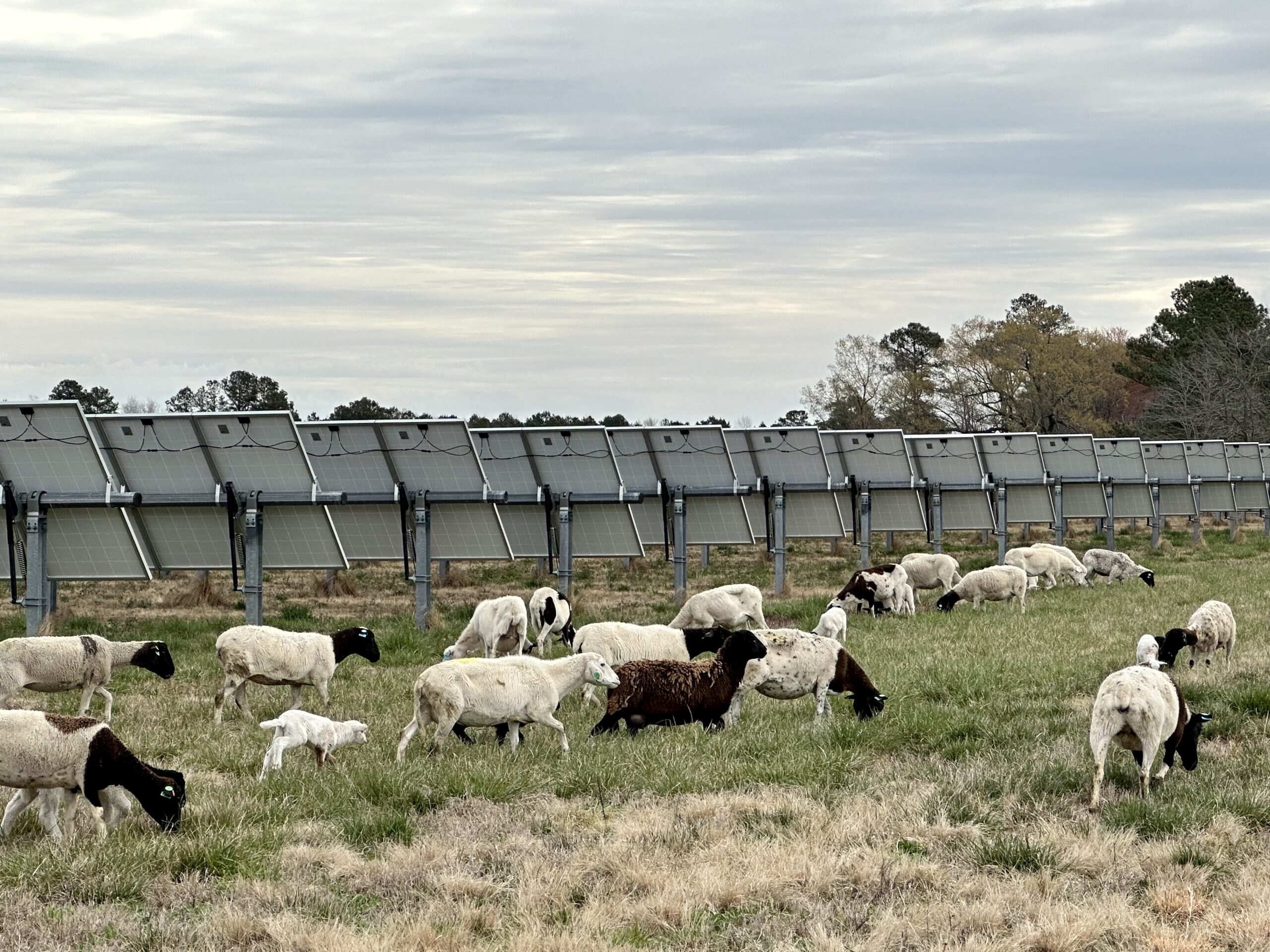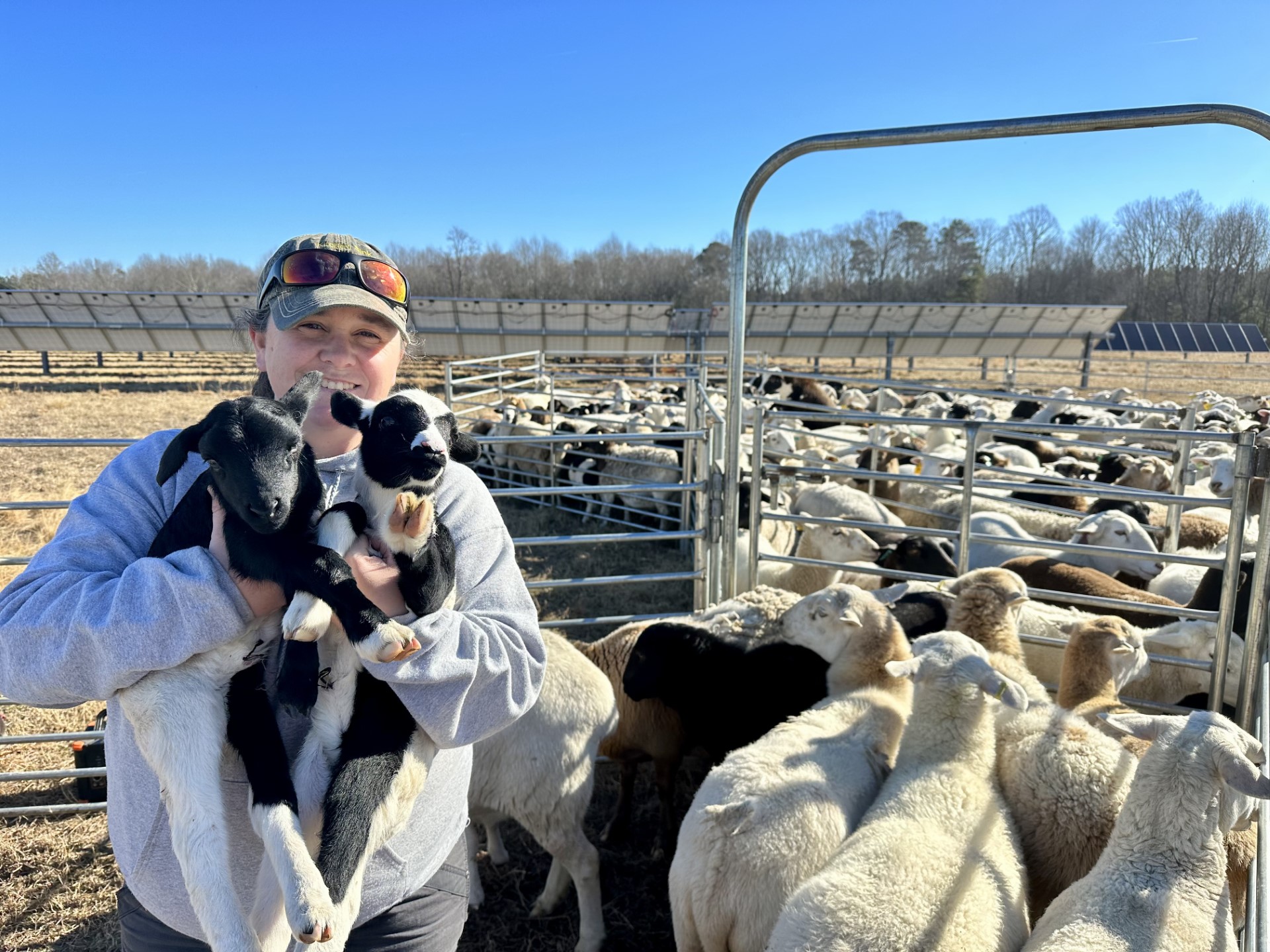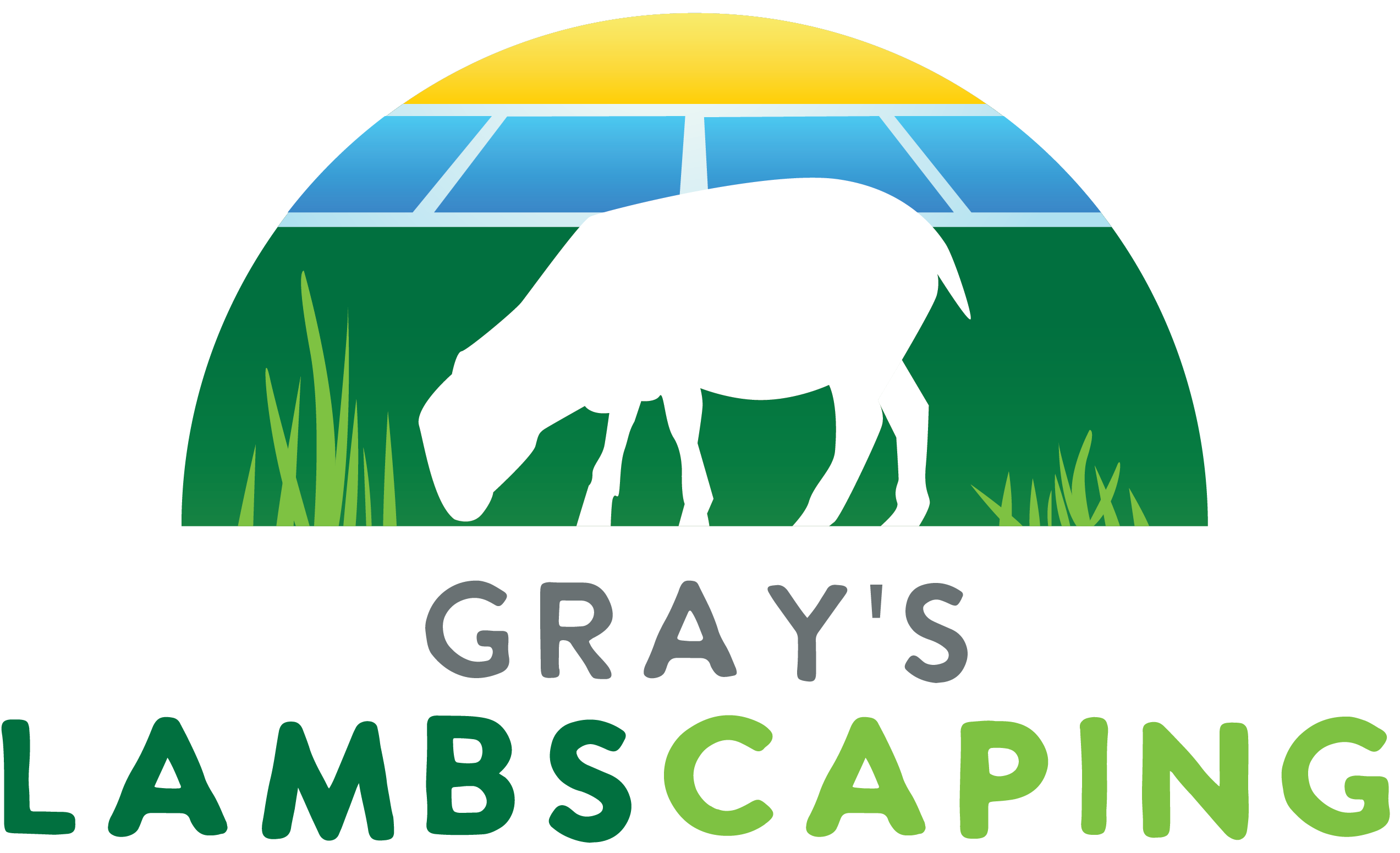Responsible Land Management Tips for Agrivoltaics Projects
By: Jess Gray · March 21, 2024 · 12 min
As renewable energy and sustainable farming practices continue evolving, an innovative practice emerges: solar grazing. This method presents a harmonious blend of agricultural prosperity and green energy production. Yet the challenge of maintaining solar farm landscapes introduces an urgent need for a cost-effective and environmentally friendly solution. Traditional methods, such as mechanical mowing and chemical herbicides, present many financial burdens and ecological concerns.
Implementing the right land management techniques in solar grazing is crucial for both solar companies and farmers to ensure the sustainability and productivity of their ventures.
Responsible land management practices ensure that solar panels operate at peak efficiency by preventing overgrowth that could shade panels and reduce their output. For farmers, it means maintaining healthy grazing conditions that optimize the health and productivity of livestock. By contrast, neglecting solar farmland can lead to significant problems, including:
- Increased maintenance costs and lower energy production.
- Grazing animal health decline and the potential spread of disease.
- Degraded vegetation management.
- Reduced plant biodiversity, wildlife, and pollinator habitats.
Land Management Step 1: Assess Land and Solar Infrastructure
The successful implementation of a solar grazing program begins with a comprehensive assessment of the land and the solar infrastructure it supports. This initial evaluation lays the foundation for a grazing operation that is both efficient and sustainable, tailored to the site’s specific characteristics.
Evaluate These Solar Site Characteristics:
- Soil Quality: Understanding the solar site’s soil composition and health is crucial, as it influences the types of vegetation that can thrive and the suitability of the land for supporting grazing livestock.
- Vegetation Type: Identifying the predominant vegetation types helps determine the land’s grazing value and potential management needs to optimize forage quality and solar panel efficiency. This also helps us create an appropriate seed mix to restore plants based on which species will be most successful in the area.
- Topography: The land’s contour and elevation can affect solar panel placement, grazing patterns, erosion, and water drainage, impacting energy production and livestock movement.
Assess the Site’s Solar Infrastructure Compatibility:
- Panel Layout: Analyze the arrangement and height of solar panels to ensure adequate space for animals to move and graze without damaging the panels.
- Access and Fencing: Consider the solar farm’s accessibility for livestock and the need for secure fencing to protect both animals and solar equipment.
- Water: Assess the availability of water sources to support animal health and welfare during the grazing period.
- Shading Analysis: Obstructions like trees, buildings, or terrain can cast shadows on the panels, significantly reducing photovoltaic efficiency. A shading analysis helps identify potential obstructions and the impact of shadows at different times of the day and year. Over time, trees can fall on fences and panels, so it’s important to plan a wide enough buffer to help protect solar infrastructure from high winds, storms, and downed trees.
- Fire Breaks: Implementing a fire break around solar panels on a solar farm is a crucial safety measure strategically planned to mitigate the risk of fire spreading, thereby safeguarding the integrity and operational continuity of the solar energy infrastructure.
- Climate and Weather Patterns: Local climate conditions, including average cloud cover, precipitation, and temperature, can affect solar panel efficiency. For instance, panels can overheat in extremely high temperatures, while areas with high cloud cover might receive less direct sunlight. Solar farms in hot climates greatly benefit from rotational grazing because the animals enrich the soil, promoting better plant growth under panels and allowing cooling from underneath.
- Solar Irradiance: This is the amount of solar power received per unit area at a given location, measured in kilowatt-hours per square meter per day. Higher solar irradiance values indicate a greater potential for solar energy generation. Geographic location plays a significant role, as areas closer to the equator typically receive more sunlight.
- Sunlight Hours: It’s crucial to determine the average number of sunlight hours the site receives daily throughout the year. Locations with longer daylight hours can potentially generate more solar energy. Seasonal variations should also be considered to estimate annual energy production accurately.
- Angle and Orientation of Solar Panels: The optimal angle and orientation (typically south-facing in the Northern Hemisphere and north-facing in the Southern Hemisphere) ensure that solar panels receive maximum sunlight over a day. The tilt angle can be adjusted based on latitude or to accommodate seasonal variations in the sun’s position.
- Site Accessibility and Infrastructure: Practical considerations like the accessibility of the site for installation and maintenance, as well as the availability of infrastructure to connect to the power grid or store energy, also play a crucial role in site evaluation.
By thoroughly evaluating these aspects, solar graziers can design and implement grazing operations that enhance the productivity and sustainability of solar farms. Tailoring the approach to each site’s unique conditions ensures that solar grazing can achieve its full potential in harmonizing renewable energy production with agricultural practices.
Step 2: Design a Sustainable Rotational Grazing Model
Developing a sustainable grazing plan is a cornerstone of effective solar grazing, ensuring the land serves dual purposes: supporting robust soil health and plant diversity while facilitating efficient energy production. This plan involves several key steps:
- Evaluate the Ecosystem: Consider your comprehensive assessment of the existing ecosystem, including soil condition, plant species, and biodiversity levels. This baseline information guides all subsequent decisions.
- Set Grazing Objectives: Clearly define your objectives, such as improving soil health, enhancing plant diversity and pollinator habitats, or maximizing solar panel efficiency. These goals will shape your grazing strategy and how you gauge the success of your agrivoltaics project.
- Implement Rotational Grazing: Dividing the land into paddocks and rotating livestock through them is vital. This method prevents overgrazing, allowing vegetation in each paddock to recover before grazing again. Rotational grazing mimics natural grazing patterns, promoting healthier plant and soil ecosystems.
- Monitor and Adapt: Continuous monitoring of soil health, vegetation growth, and animal well-being allows the plan to be adapted as needed. This adaptive management approach ensures that the grazing plan remains responsive to the land’s changing conditions and the solar farm’s needs.
Rotational grazing is the linchpin in preventing overgrazing and soil degradation, ensuring that the land and solar panels maximize productivity. Rotational grazing enhances soil structure, prevents erosion, and promotes fertility, allowing for faster vegetation recovery and encouraging deeper root system growth. In our experience, this all leads to a more resilient and diverse plant community on solar farms.
Step 3: Optimize Paddock Layout for Solar Grazing
Creating an optimal paddock layout is essential for successful solar grazing, ensuring that livestock graze efficiently without compromising the functionality of solar panel arrays. Here are some best practices for paddock design:
- Accommodate Solar Arrays: Design paddocks to fit around the solar panel layout, allowing easy access for sheep to graze while avoiding damage to the panels or infrastructure.
- Fencing Considerations: Use movable fencing to create flexible paddock sizes that can be adjusted based on grazing needs and vegetation growth. Ensure that fencing does not obstruct the operation or maintenance of solar panels.
- Water: Strategically place fresh, clean water sources to encourage even grazing distribution and to ensure livestock have easy access to water.
These considerations ensure that the paddock layout supports efficient grazing and animal welfare while accommodating solar farms’ unique requirements.
Step 4: Develop Your Vegetation Management Plan
Effective vegetation management around solar panels is crucial for maintaining efficiency and supporting the ecosystem’s health. Based on the site, we can employ several solar grazing strategies:
- Targeted Grazing: We use sheep to graze around solar panels, taking advantage of their natural tendency to prefer certain plant species. This selective grazing behavior helps manage vegetation height and density, preventing shading and promoting panel efficiency.
- Controlling Invasive Species: Sheep can significantly control invasive plant species, which might require chemical herbicides or mechanical removal. Their grazing can suppress the growth of invasive species, giving an advantage to native and beneficial plant species.
- Promoting Plant Diversity: By carefully managing grazing intensity and timing, sheep can help encourage the growth of a diverse range of plant species. This biodiversity supports a healthier ecosystem, improves soil quality, and enhances the landscape’s aesthetic and ecological value.
Solar grazing practices help ensure that the land around solar panels remains productive and healthy, supporting energy production and ecological sustainability through these vegetation management strategies.
Step 5: Promote Soil Health and Control Erosion
Maintaining soil health is a cornerstone of sustainable solar grazing systems. Rotational grazing plays a pivotal role here, ensuring that no single area bears the brunt of continuous grazing, which can lead to soil degradation and reduced plant diversity. Enhancing organic matter in the soil is another crucial strategy. This can be facilitated through the natural cycle of grazing, where livestock manure serves as a natural fertilizer, enriching the soil and promoting the growth of a diverse range of plant species. Over time, grazing improves the soil’s fertility and water retention capacity, making the land more resilient to flooding and drought.
Erosion control is particularly important in solar grazing operations, especially on sloped lands where solar arrays are often situated to maximize sunlight exposure. Preventing erosion includes maintaining a healthy vegetation cover to protect the soil from wind and water erosion. Strategic placement of windbreaks, contour plowing, and establishing buffer zones around water bodies can also significantly reduce erosion risks, protecting the soil and the solar infrastructure.
Step 6: Managing Water in Solar Grazing Systems
Effective water management is key to ensuring the sustainability of solar grazing systems, both the solar operation and the grazing livestock. Water conservation efforts are essential in maintaining an ecological balance and supporting healthy plant and animal life. Solutions for providing clean, accessible water to livestock include installing solar-powered water pumping systems that distribute water efficiently across the grazing area. This ensures that animals have access to fresh water and reduces reliance on grid electricity, aligning with the sustainability goals of solar grazing operations.
Protecting the quality of land and water resources is equally important. Graziers should implement practices such as creating buffer zones around water bodies to prevent direct access by livestock, which can lead to soil erosion and water contamination. Using movable water troughs and rotational grazing can help distribute grazing pressure evenly across the land, minimizing the risk of overgrazing and associated soil and water degradation.
Step 7: Keystone Plant Species – The Pillars of Biodiversity and Pollinator Support
Keystone plant species are pivotal in maintaining biodiversity and supporting pollinator habitats. These plants are the bedrock upon which many other species depend, offering critical food, nutrients, and shelter resources. Their presence is especially vital on solar sites, where we have a unique opportunity to promote plant diversity and conservation.
Keystone species help to anchor the ecological balance, supporting a variety of wildlife, from pollinators like bees and butterflies to birds and beneficial insects. These species enhance the resilience of the ecosystem, making it more robust in the face of environmental stresses and changes.
Pollinators are particularly important in agrivoltaics projects, as they play a crucial role in reproducing plant species, including those vital for livestock forage. By supporting a diverse range of keystone plants, solar farms can become thriving habitats for pollinators, enhancing the area’s ecological value and contributing to broader environmental goals that protect endangered and migratory species.
How to Identify Keystone Plants for Your Ecoregion
The first step in supporting the growth of keystone plants on your solar site is identifying the native species that are beneficial to your solar farm’s specific ecoregion. Ecoregions are areas where ecosystems (and the type, quality, and quantity of environmental resources) are generally uniform. For example, the right keystone plants for a solar grazing operation in the Pacific Northwest will differ from those best suited to the sites we commonly work with on the East Coast.
You can find your ecoregion based on zip code using free online tools, like this one by BPlant. Next, search for a list of keystone/host plant species based on your ecoregion. We like this Native Plant Finder tool from the National Wildlife Federation. Local universities, agricultural extension offices, and conservation groups are also invaluable resources that can offer insights into the specific ecological needs and opportunities for your solar farm’s area. When you work with us, our full-time certified wildlife biologist will examine your site’s current vegetation and make site-specific grazing strategies and recommendations to encourage host plant growth and biodiversity.
Your solar grazing land management strategy supports the growth of keystone plant species, helping land owners and solar companies enhance the ecological value of their farms, biodiversity, pollinator habitats, and ecosystem resilience.

Solidago, or goldenrod, is a common keystone plant in Virginia
Step 8: Monitoring and Adapting Management Practices
Monitoring land health, animal well-being, and solar panel efficiency is vital in solar grazing operations. This typically involves regular checks on vegetation growth patterns, soil quality, and livestock health to ensure that the grazing system functions optimally. Technology can play a significant role in this aspect, with tools like drone imagery (when permitted by the solar company) and GPS tracking providing valuable data on grazing patterns, vegetation health, and panel efficiency.
Adaptability in management practices is crucial in responding to environmental changes and feedback from the land. This means being prepared to adjust grazing patterns, modify paddock sizes, or implement additional soil and water conservation measures as necessary. For instance, during periods of drought, it may be necessary to alter grazing patterns to allow vegetation more time to recover or to implement additional water conservation strategies.
By staying vigilant and responsive, solar companies, graziers, and farmers can ensure that their operations remain sustainable and productive, regardless of changing environmental conditions. This proactive approach to land management supports the ecosystem’s health and maximizes the efficiency of solar energy production, creating a win-win scenario for renewable energy and agricultural development.
About Jess
Jess Gray is the CEO of Gray’s LAMBscaping, LLC, overseeing the company’s financial management, policy development, logistics, and reporting. As a 2023 Nuffield International Agricultural Scholar, Gray has represented her company in over half a dozen countries, focusing her research on integrating solar energy with livestock grazing.



